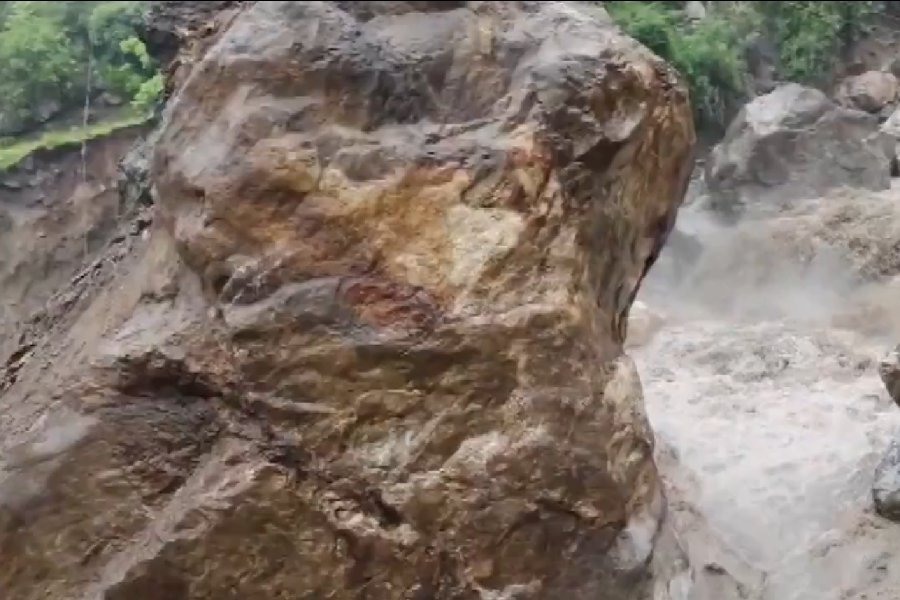 |
| A Clive house doorway revealed after being cleared of parasites |
Clive House, in Dum Dum, presents a perfect picture of the passage of time, the various periods quite literally forming the various stratum of the mound on which it was erected more than 300 years ago.
In the recent past, after extensive excavations, the Archaeological Survey of India (ASI) had discovered the remnants of a trading post under the mound that harked back to the days of Chandraketugarh, when maritime trade flourished in Bengal.
But now this area off Jessore Road, close to Nagerbazar, is named after the residence of the man, who, to most Bengalis, was the villain of the piece in the Battle of Plassey. It was in this house that the East India Company and Mir Zafar had signed their agreement before the attack of Siraj-ud-daulah.
Even before that, there is documentary evidence of Nawab Alibardi Khan having seen this house. The original house was single-storeyed. Clive had added another storey over it. Its porch has survived. So have the buttresses.
We have it from Desmond Doig?s book that parties used to be thrown on the extensive grounds, that once boasted beautiful rose bushes. Doig had written that Burra Kothi was an ?old Dutch or Portuguese factory built upon the massive foundations of a qila or fort.?
After the Partition, refugees occupied the building, each family turning the cavernous rooms into its living quarters. Photographs taken as late as in the 80s show that this huge pile of masonry was free of the parasitical plants that later smothered it. Gradually, exposed to the elements as it was, the structure began to show definite signs of dilapidation.
The roof caved in and the pillars inside started giving in. Some of the squatters were forced to move out and build shanties on the peripheries of Clive House. But an intrepid family or two continued to live in the section facing the football ground that was once part of the great lakes.
Then, about two years ago, the ASI declared it a monument of national importance, along with the ruined Hastings House in Barasat and the synagogues of Calcutta. After quite some time, the ASI issued a notification in November 2003, seeking objections to it being declared a monument of national importance. The former squatters, who had settled around the house, pointed out that the common passage that led to the municipal road was through the house, and the electric meters were inside it. But on March 25, the ASI allegedly disregarded the objections and unilaterally declared it a monument of national importance.
The parasites were removed. The ASI said it would take about three years to restore, or rather rebuild it, for the structure is in a precarious state. But on August 31, the settlers moved court, and at the first hearing on September 15, the ASI was directed to remove debris from the common passage and the CESC was told to shift the power meters.
Present times threaten to overwhelm the past. If the case drags, perhaps Clive House will meet the same fate as Currency Building in BBD Bag, which the ASI was never allowed to restore even after taking it over.











